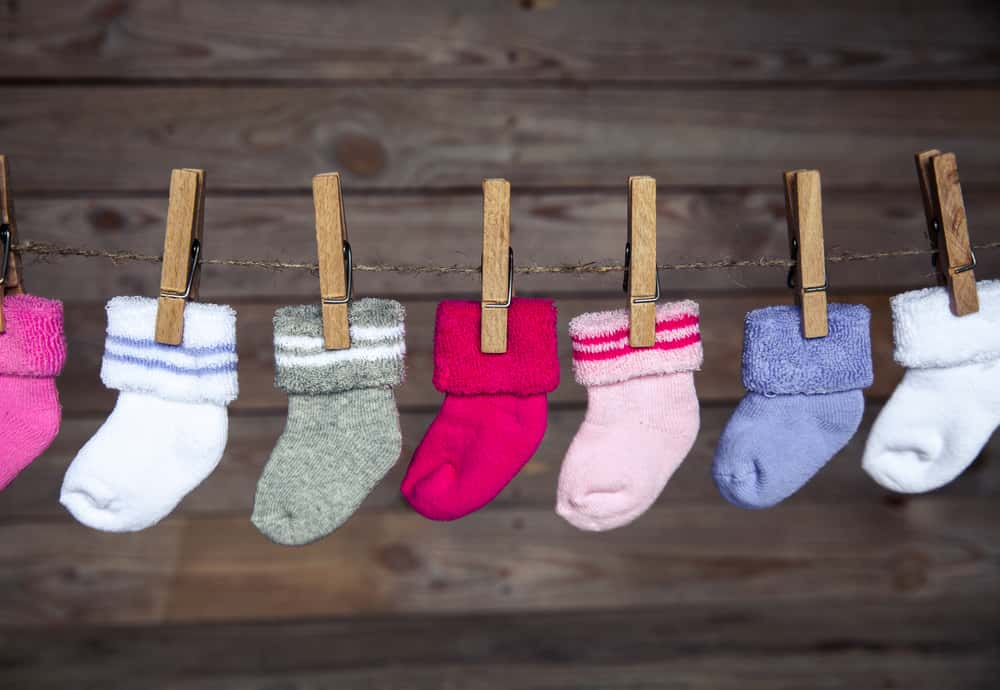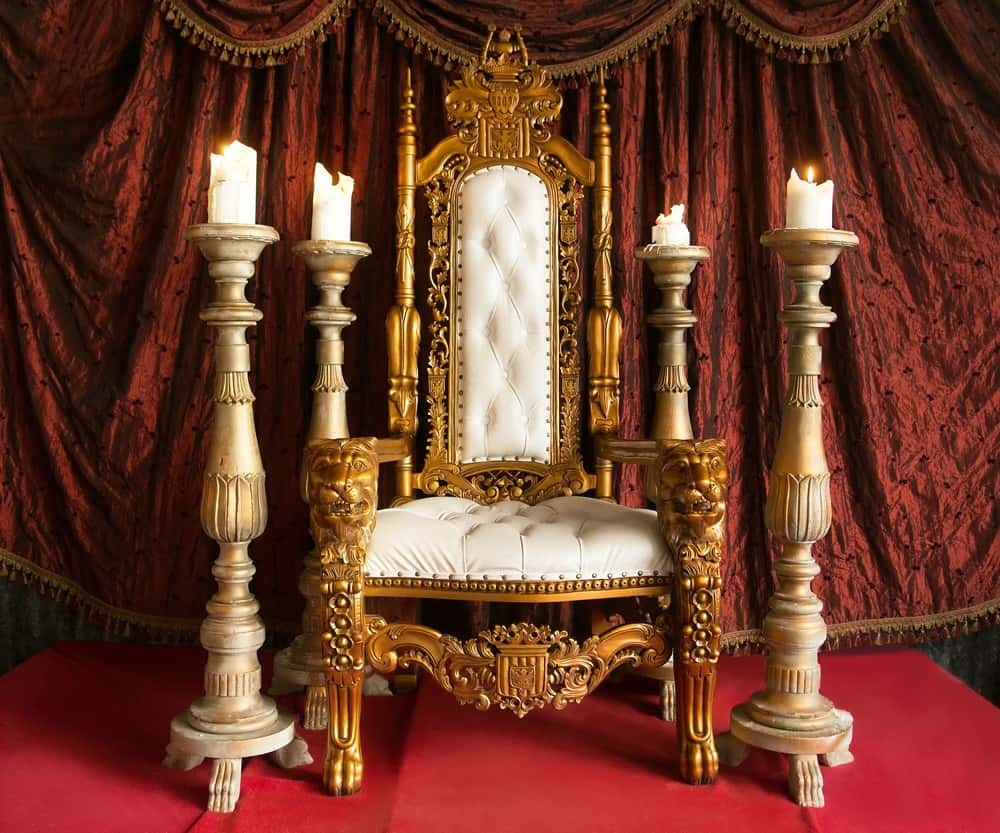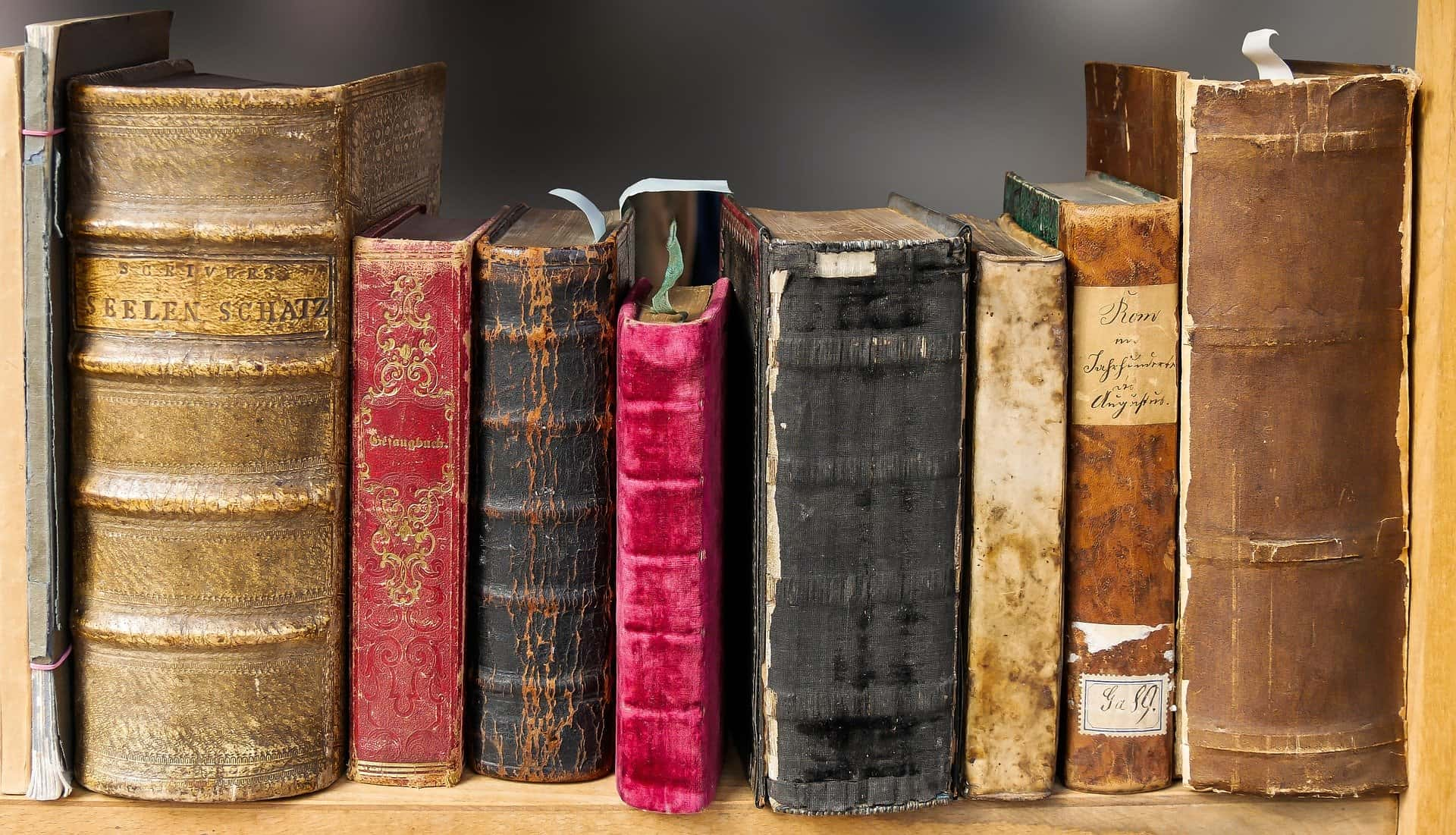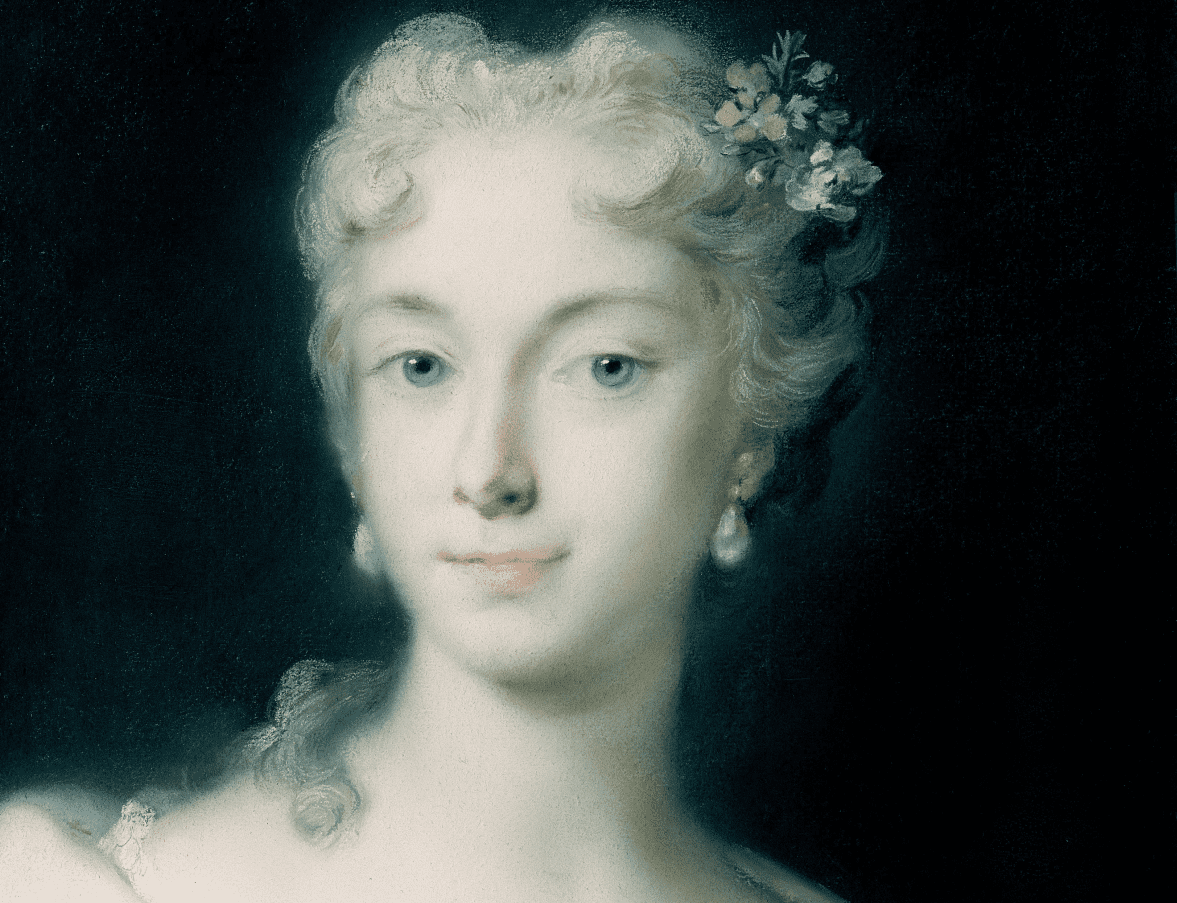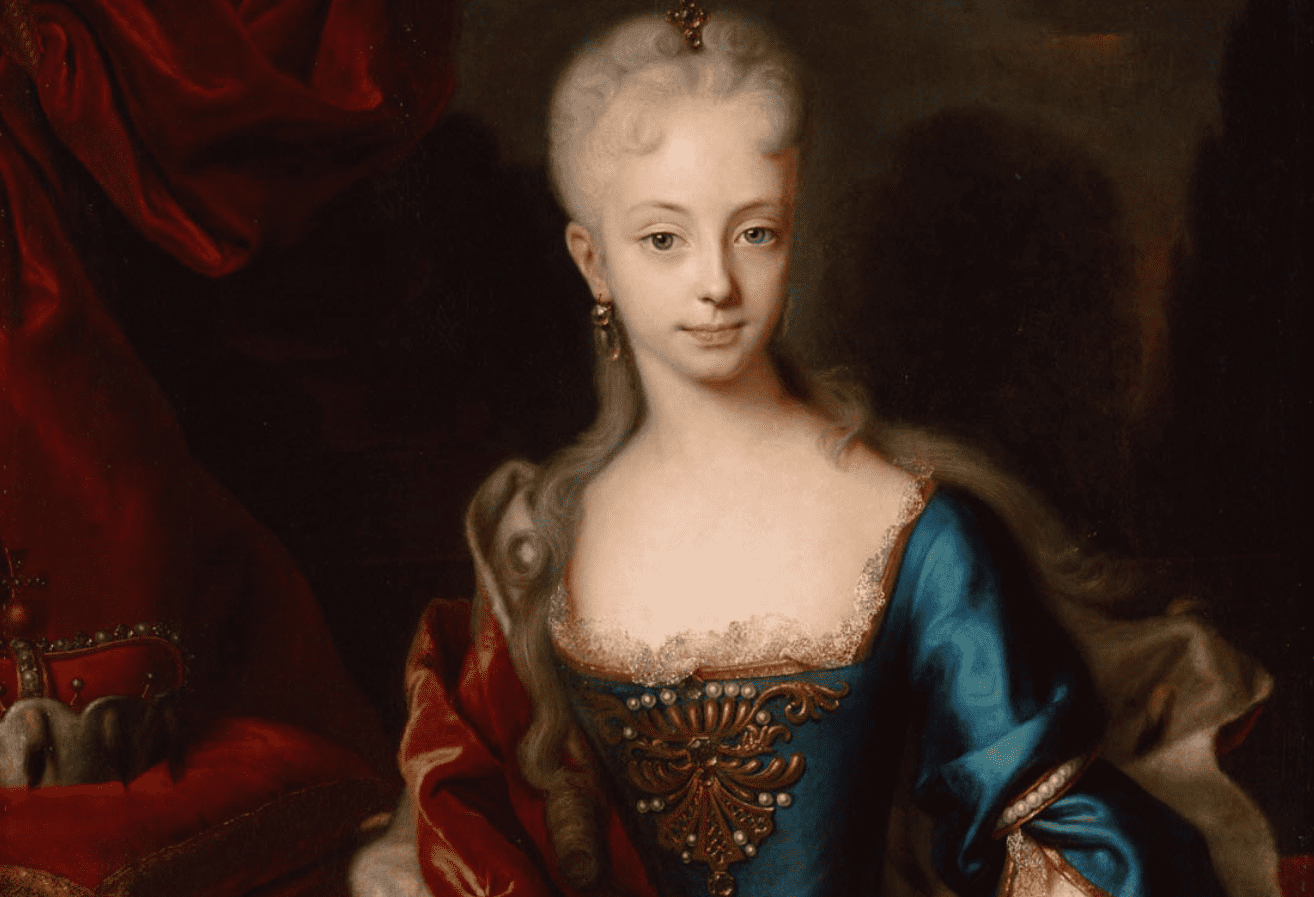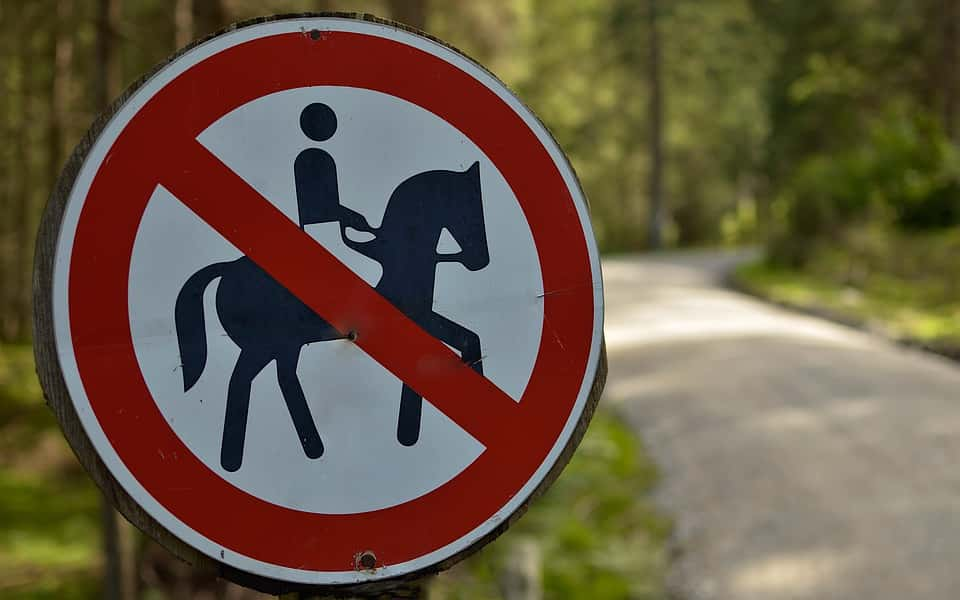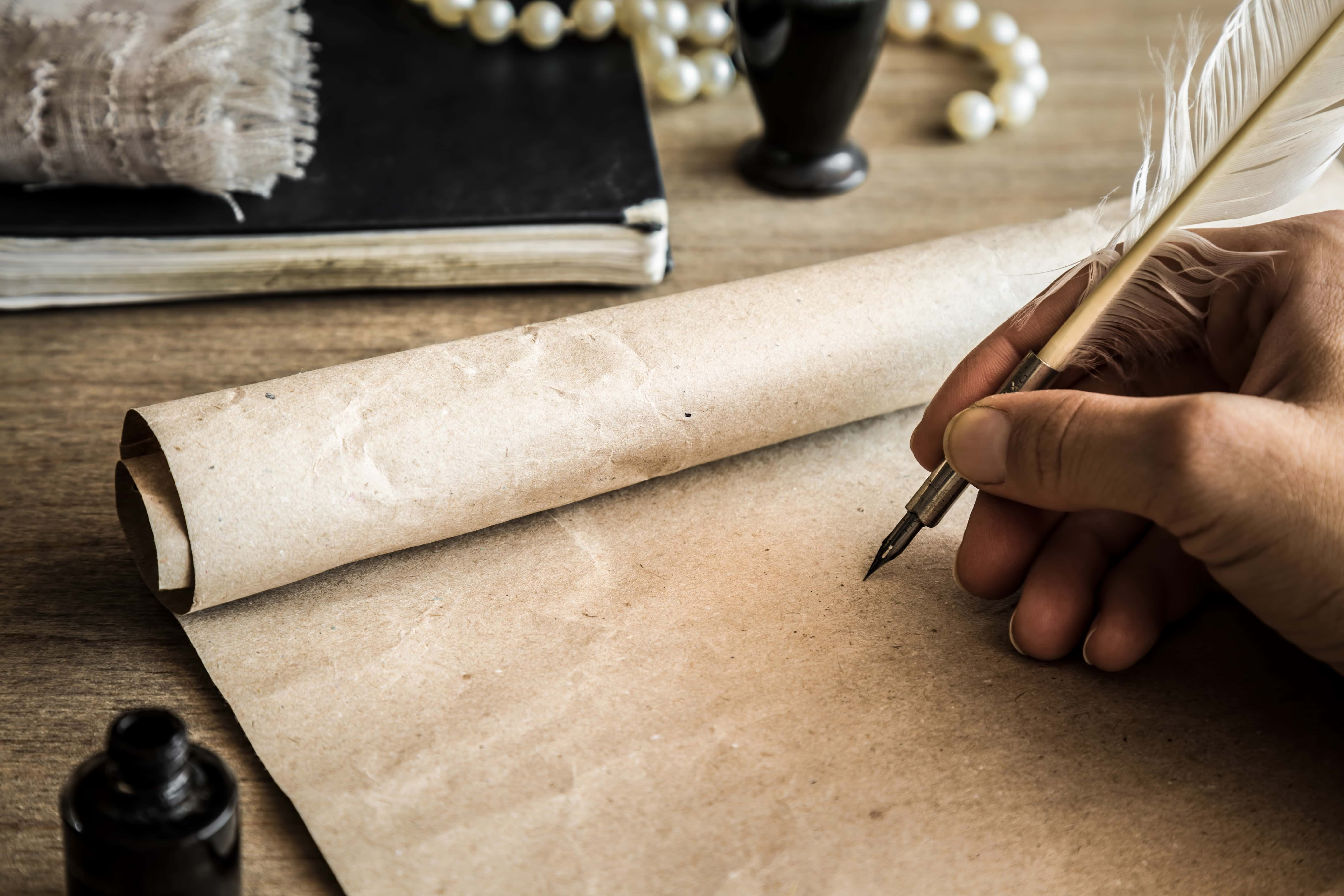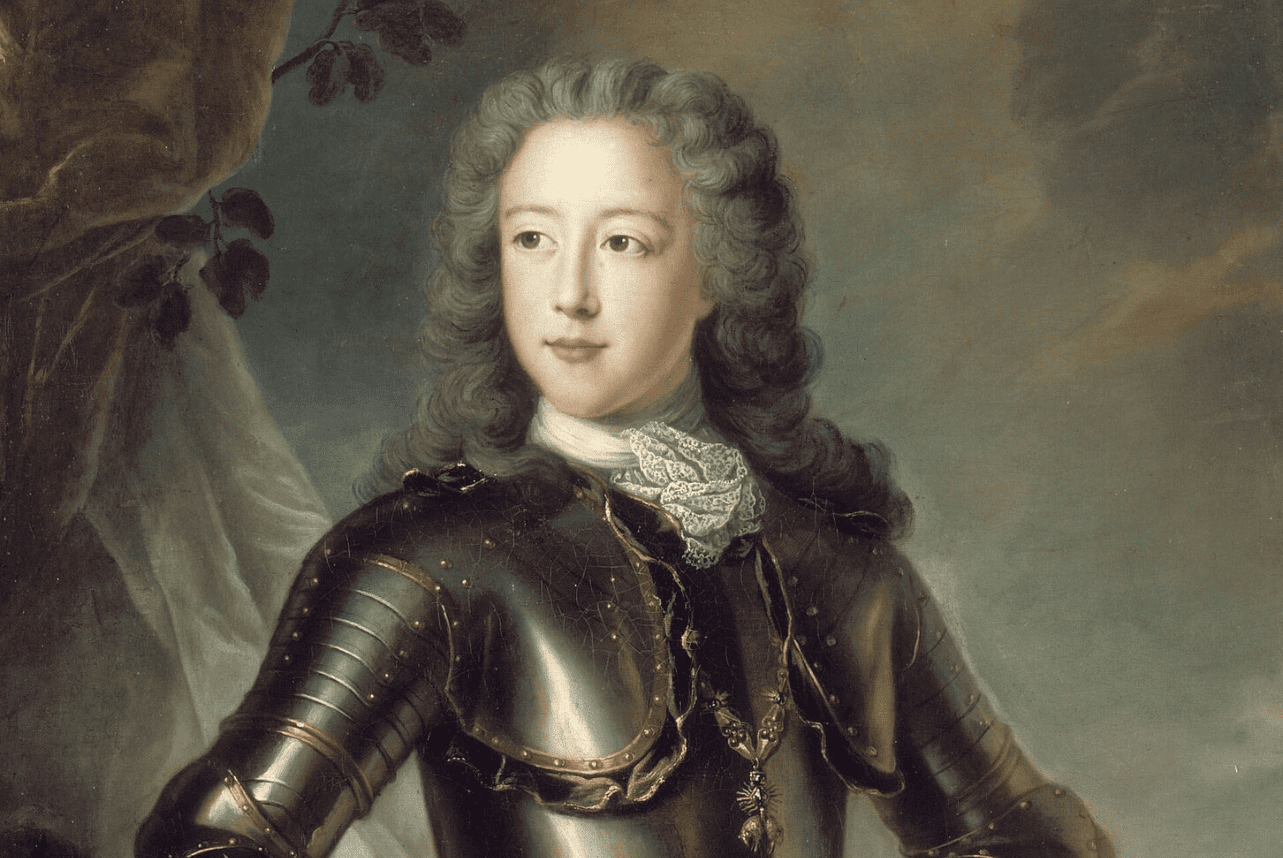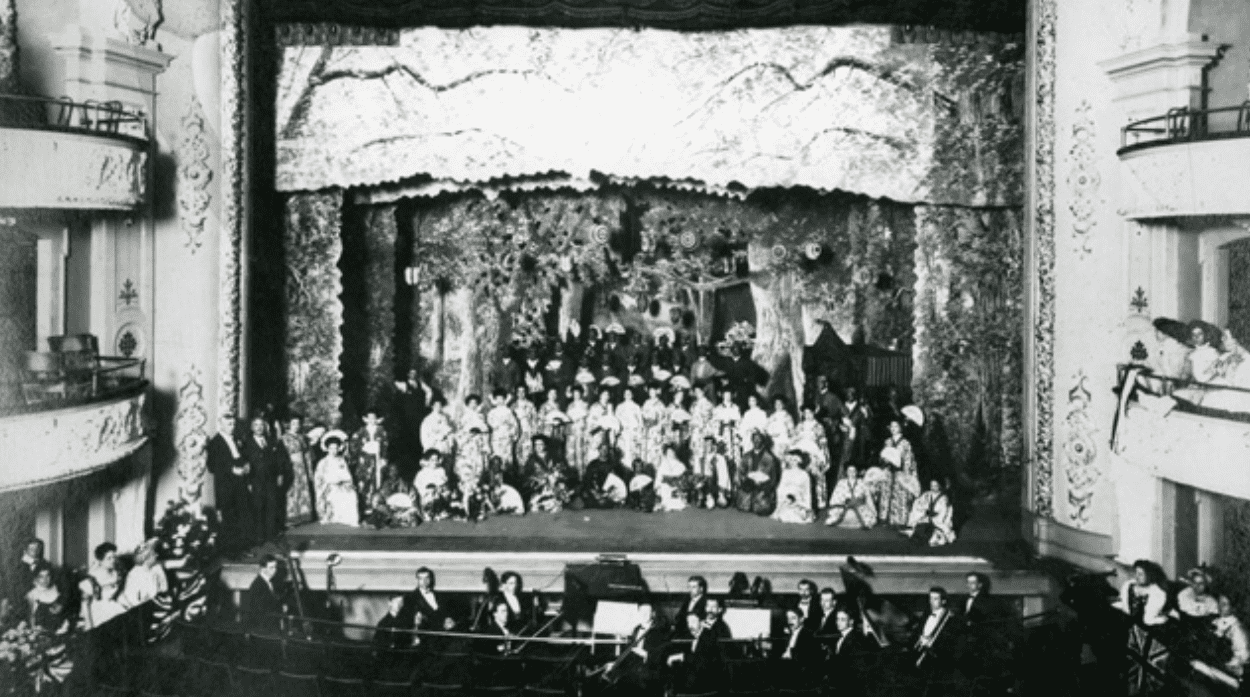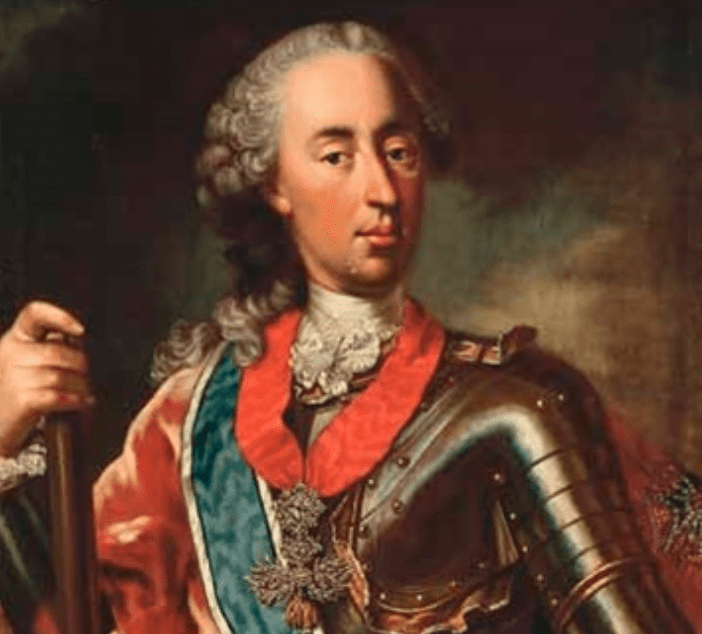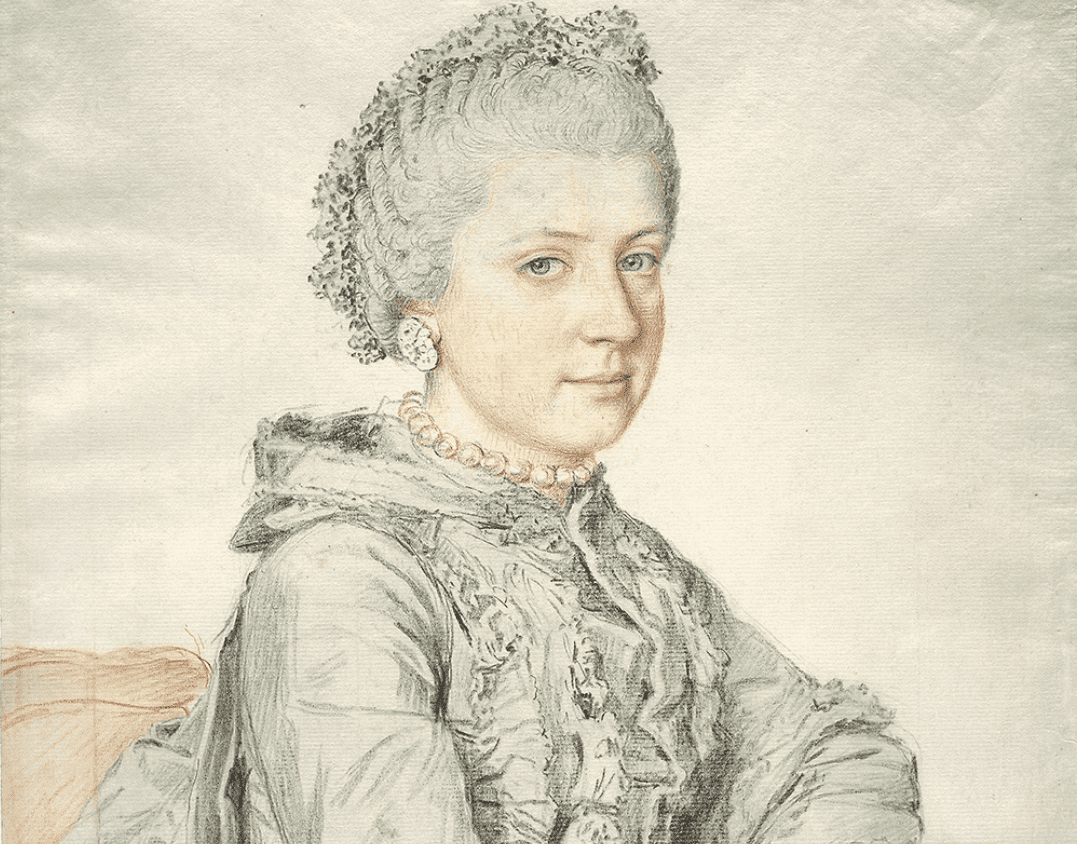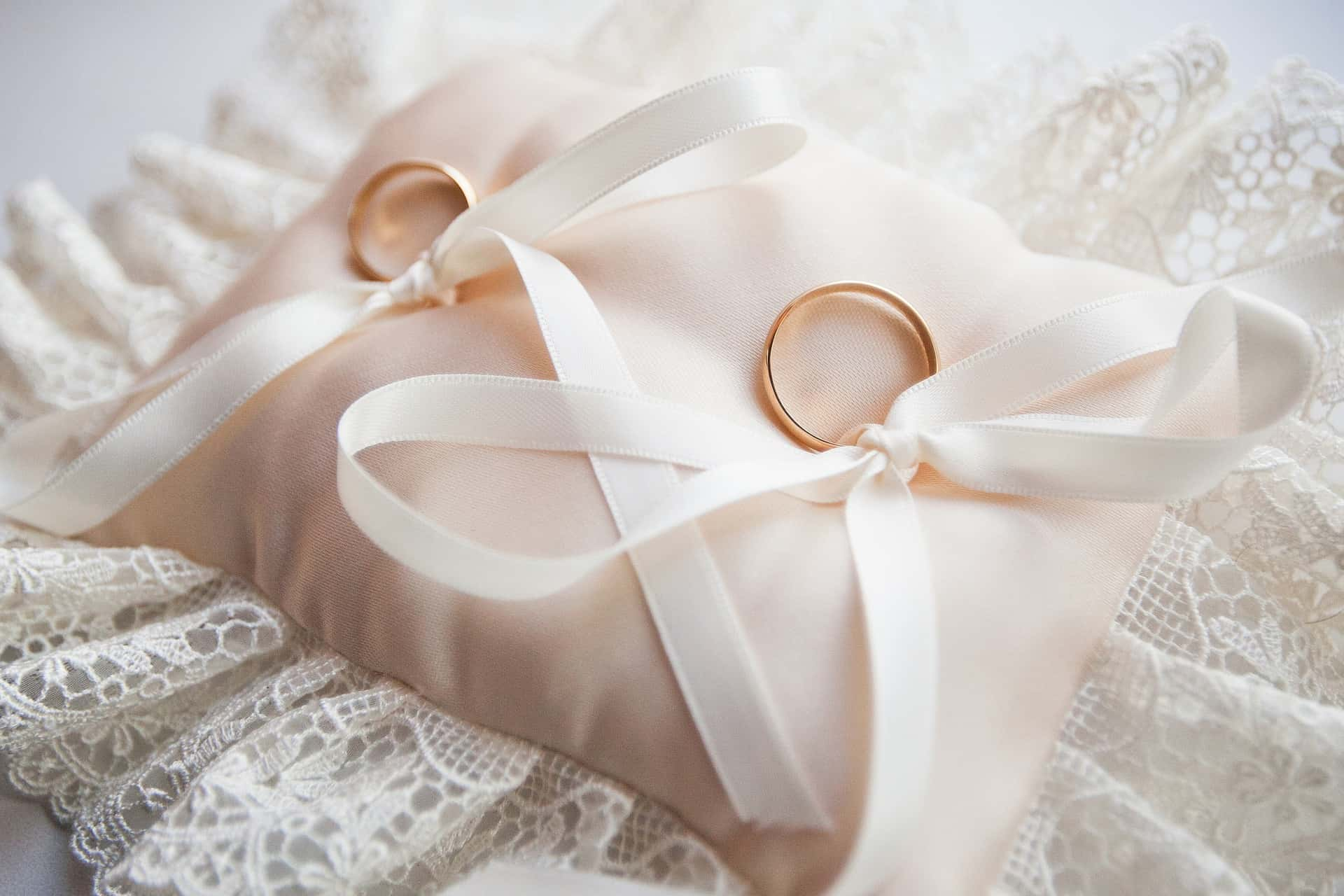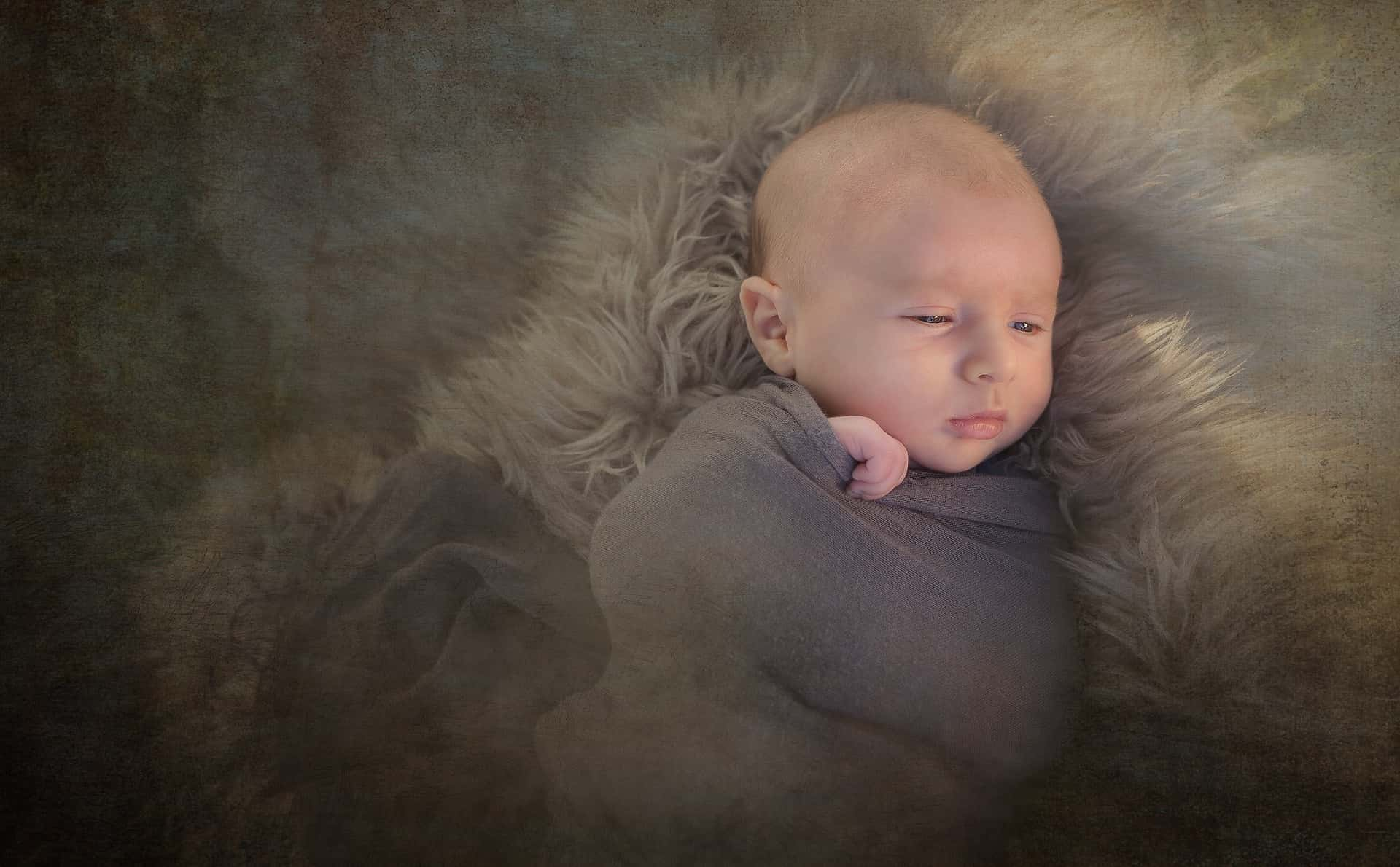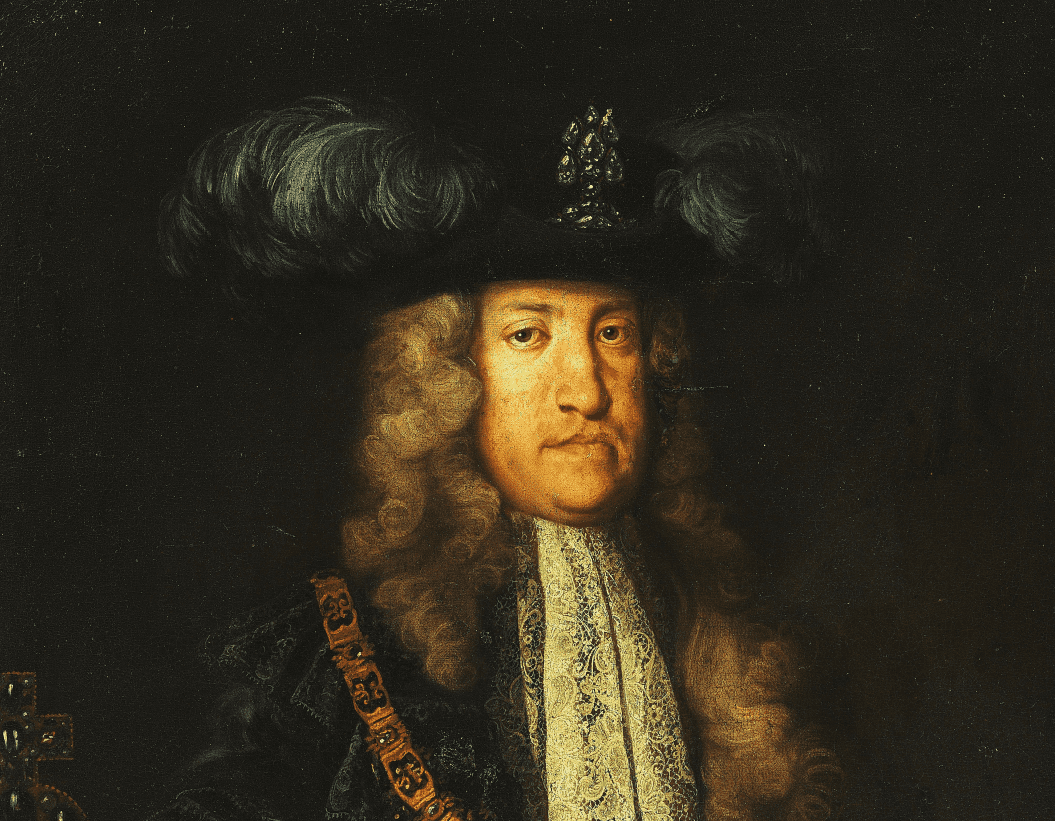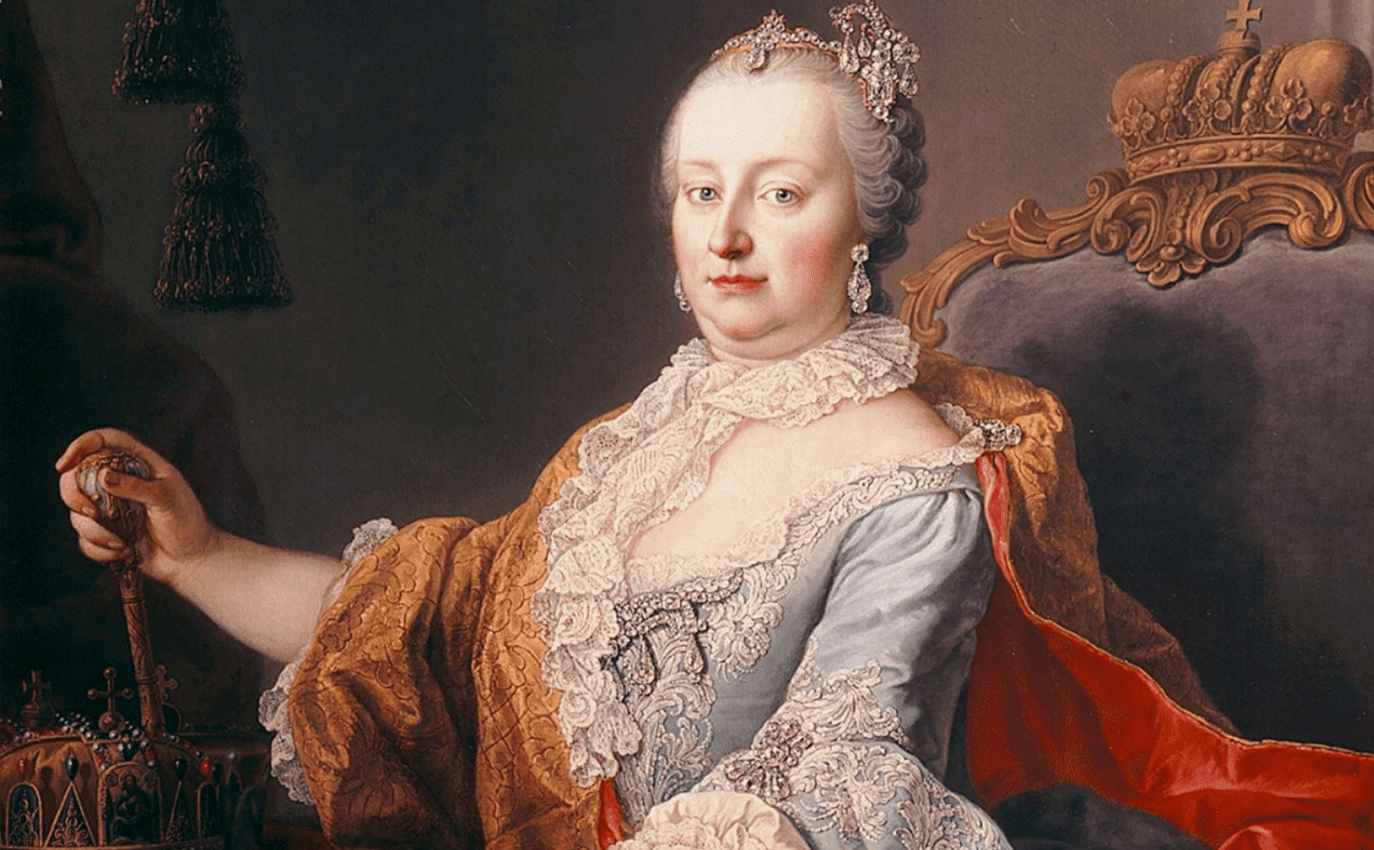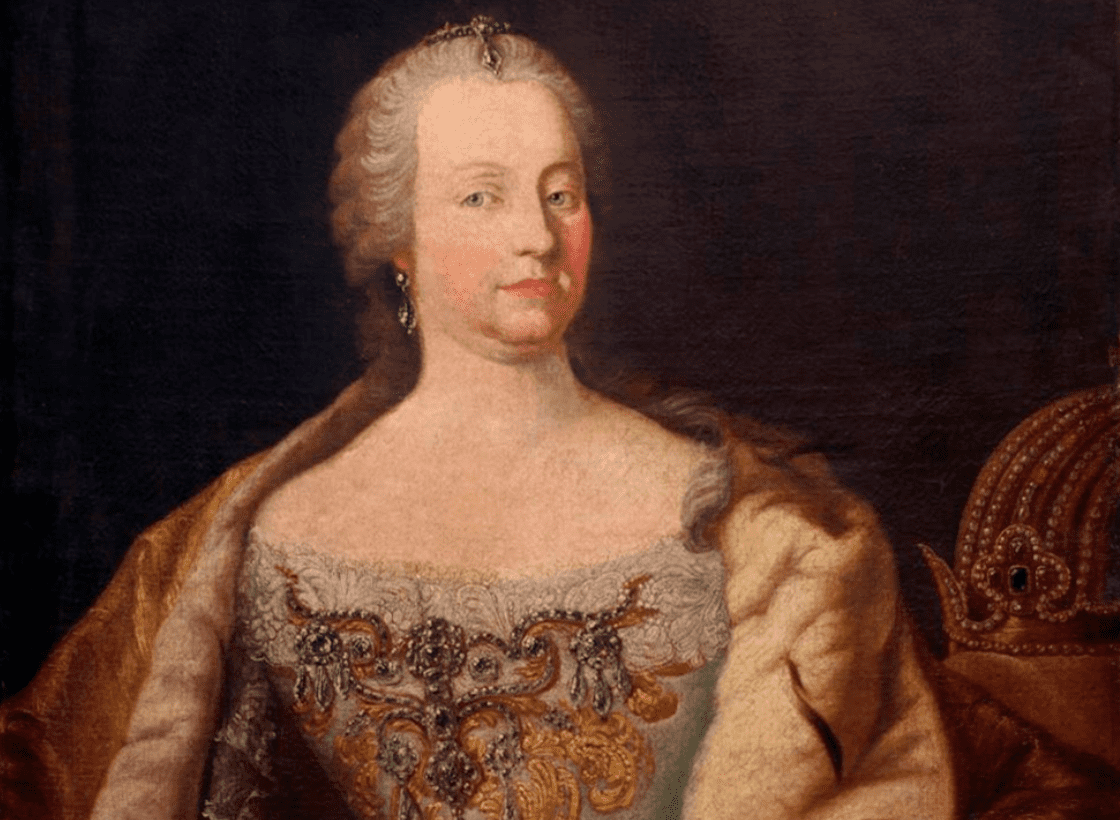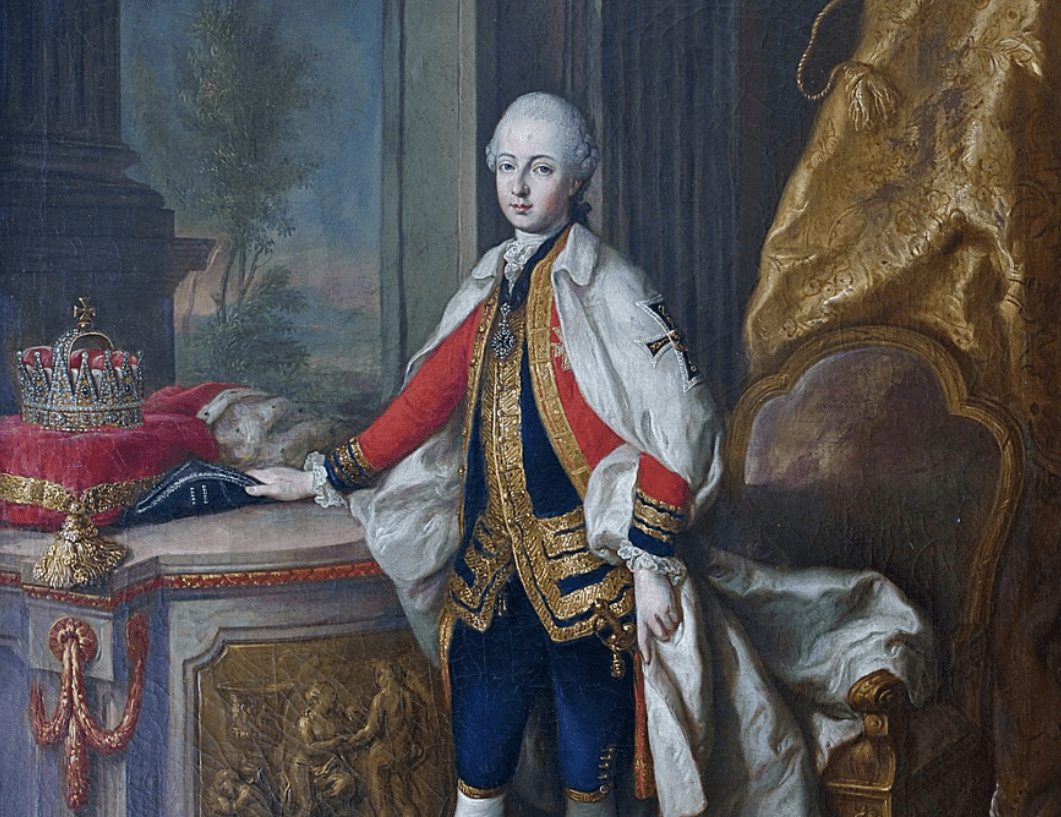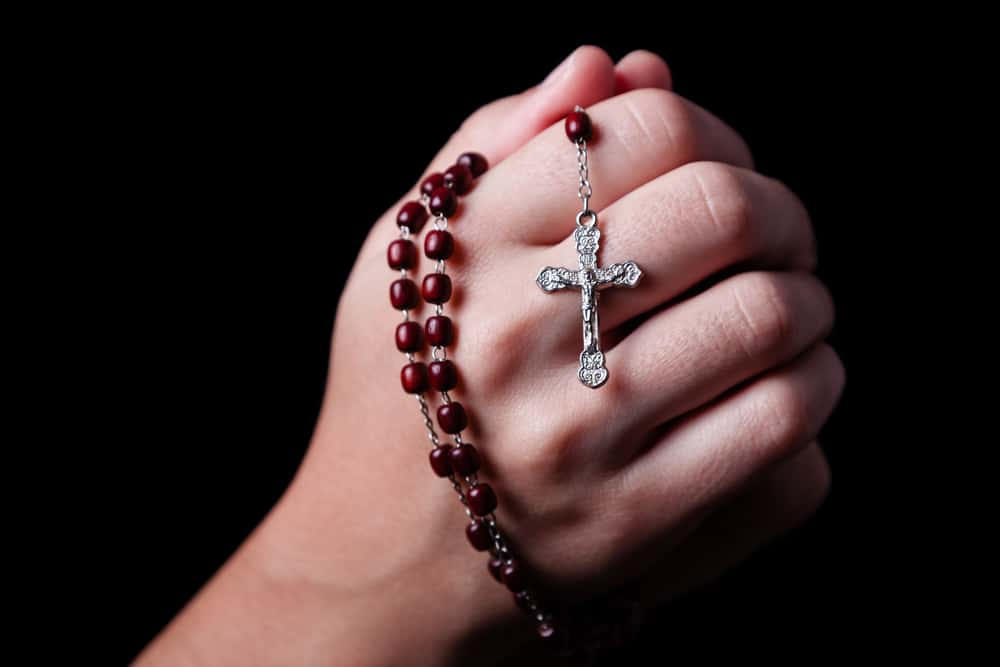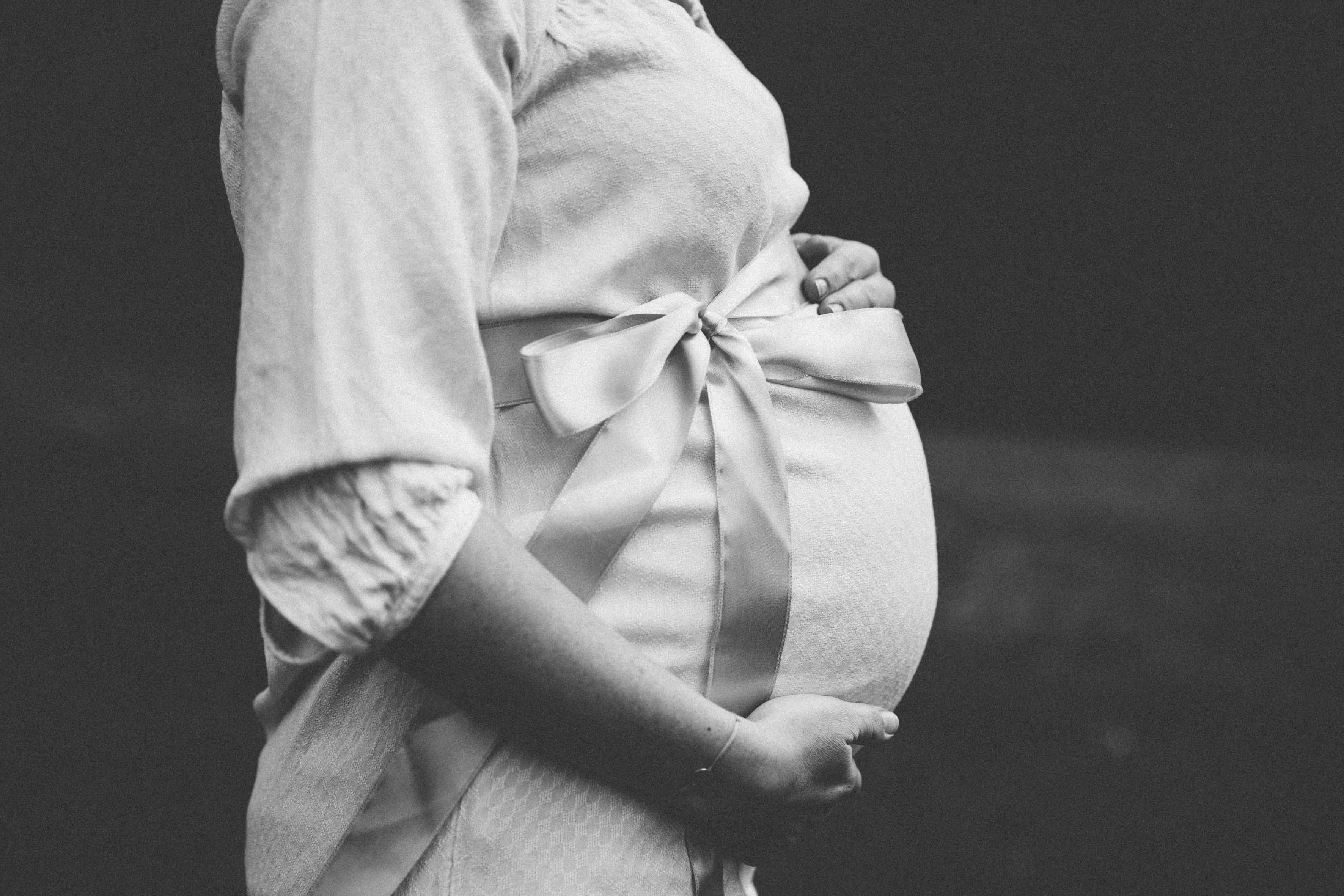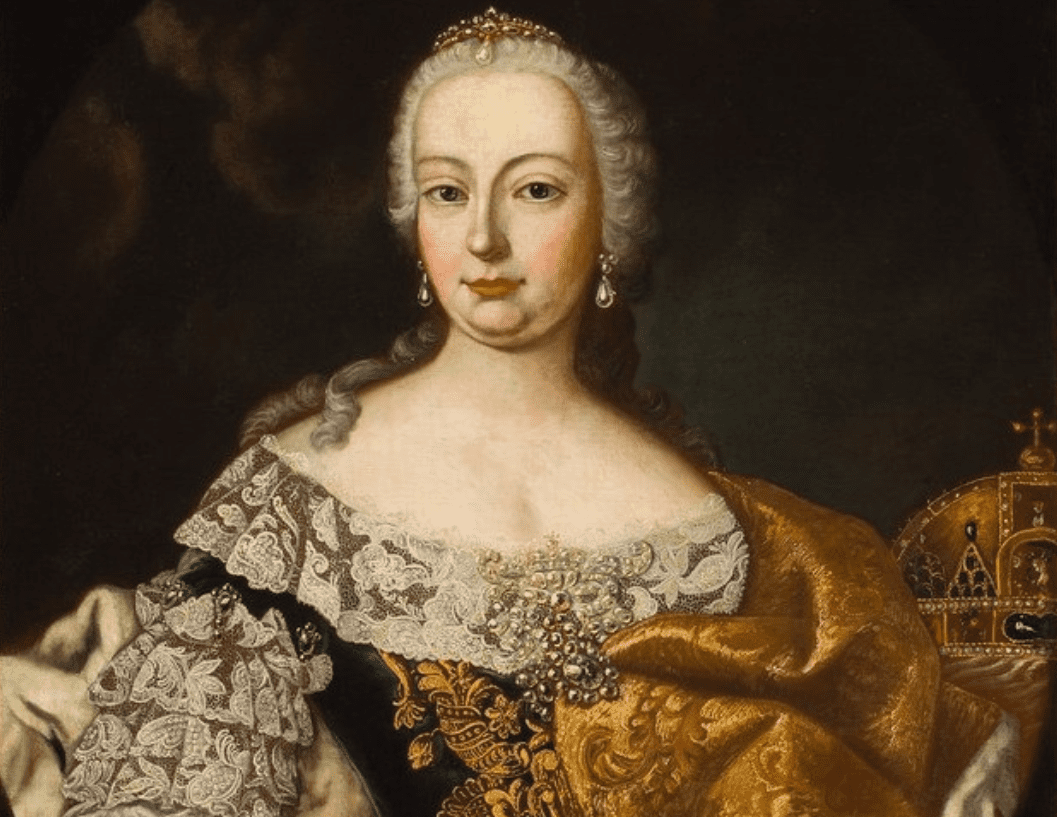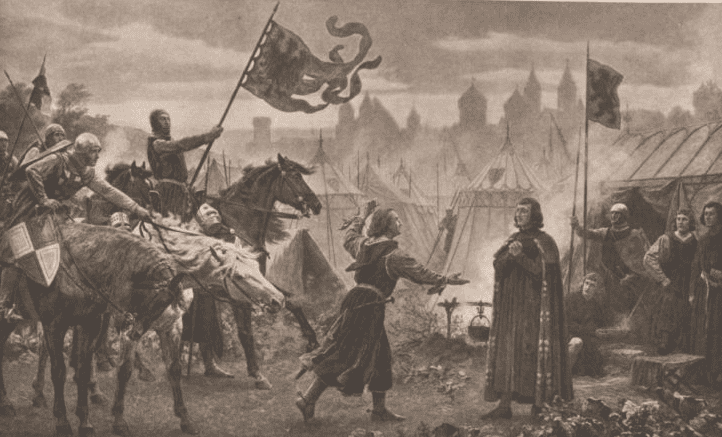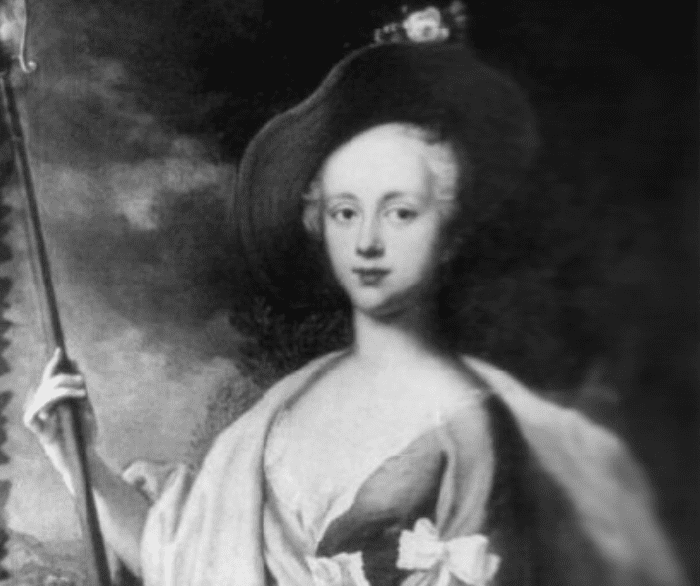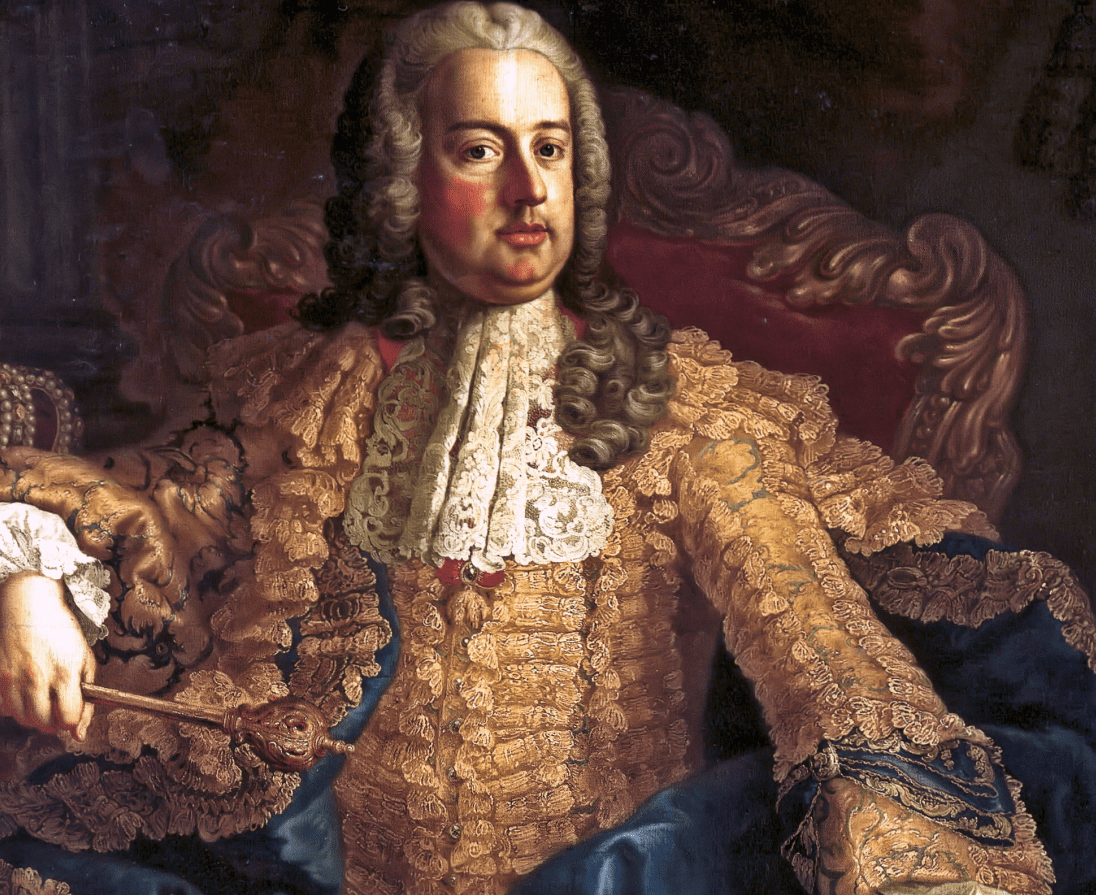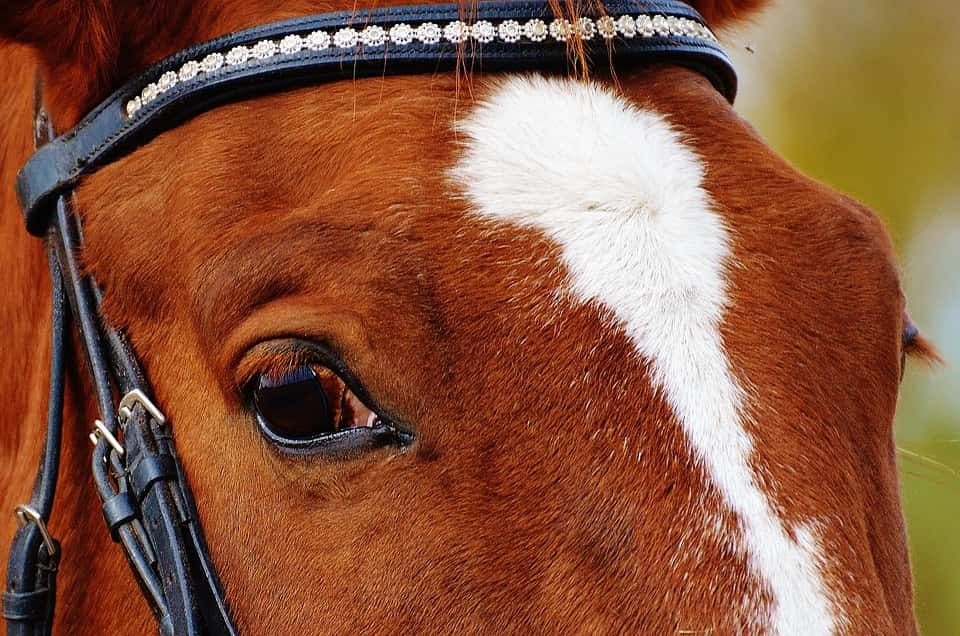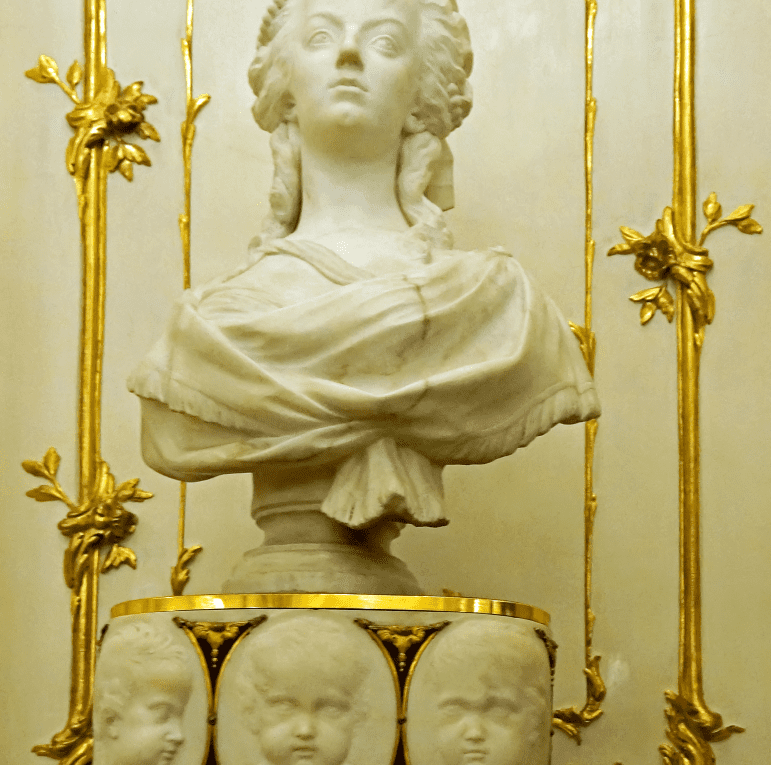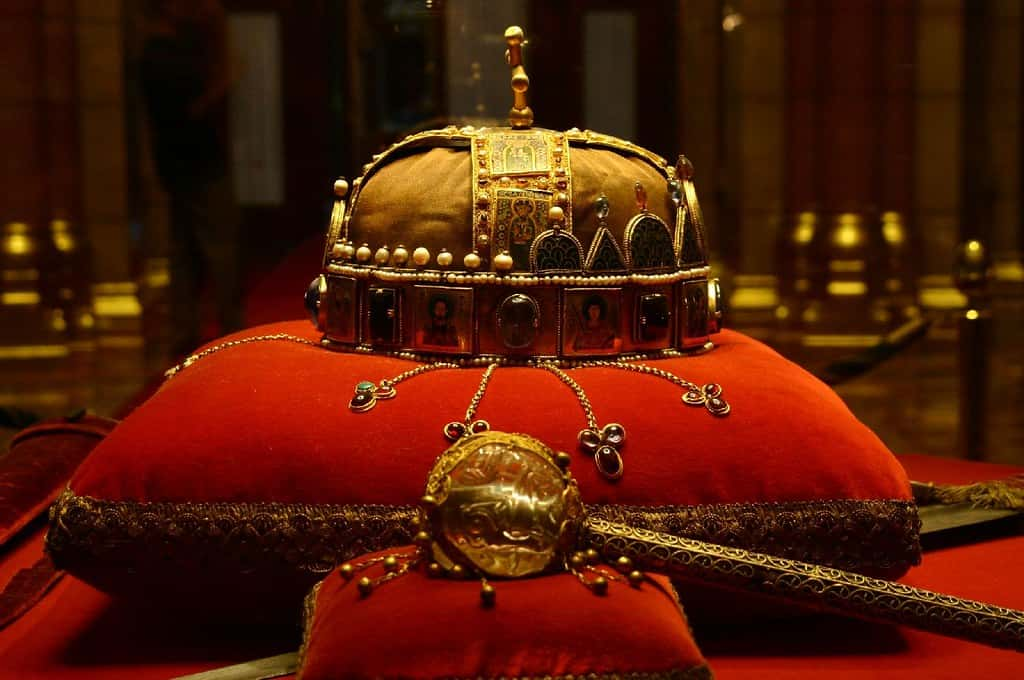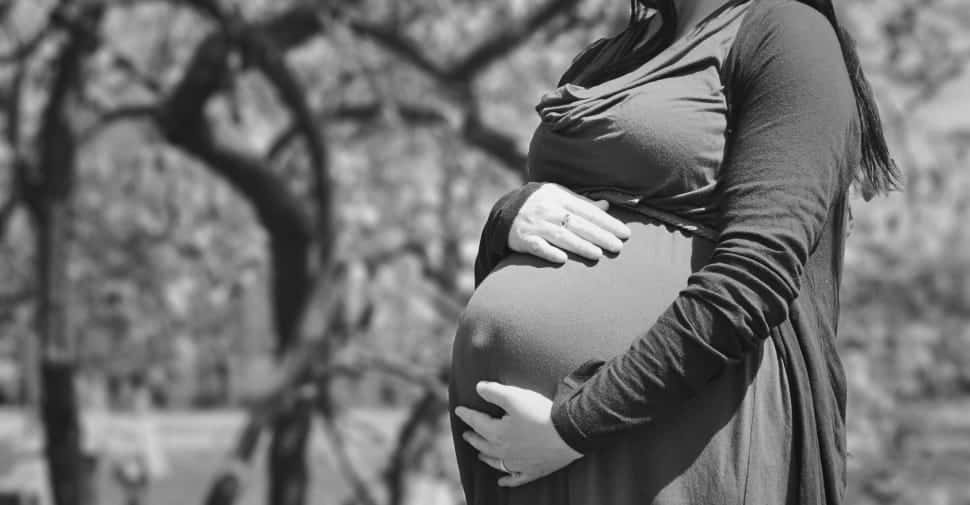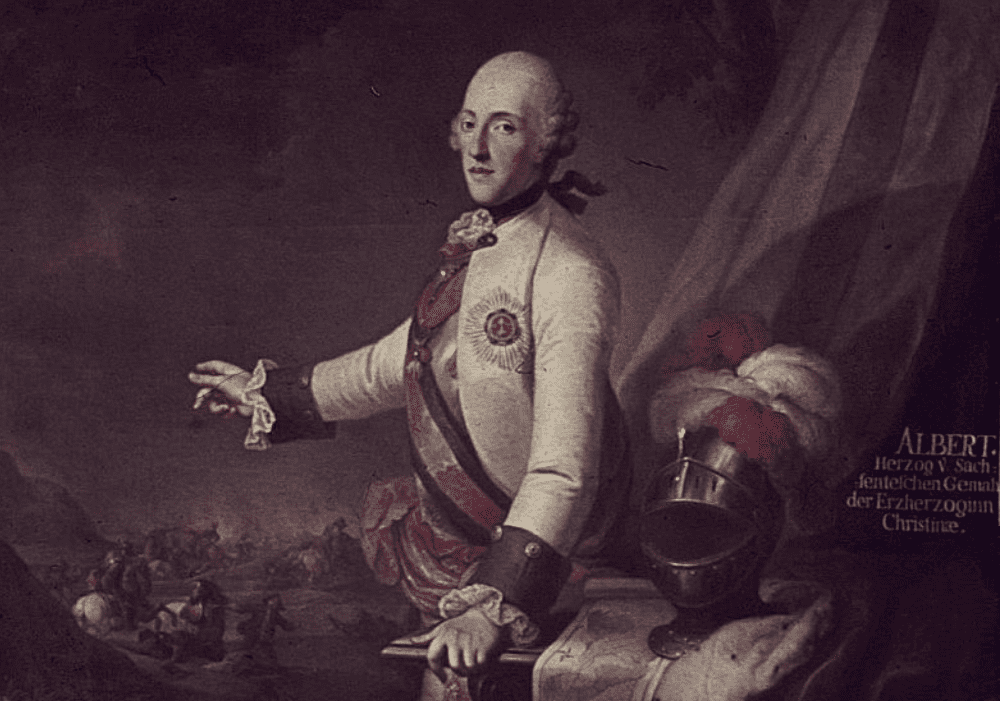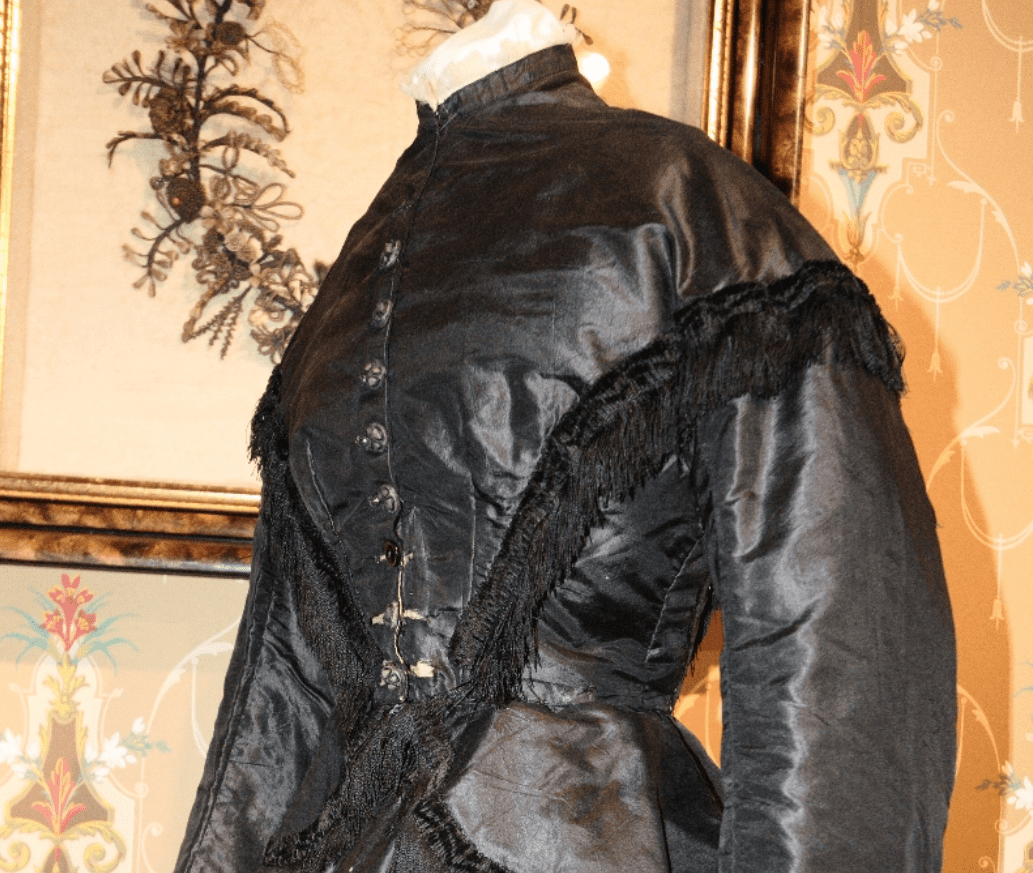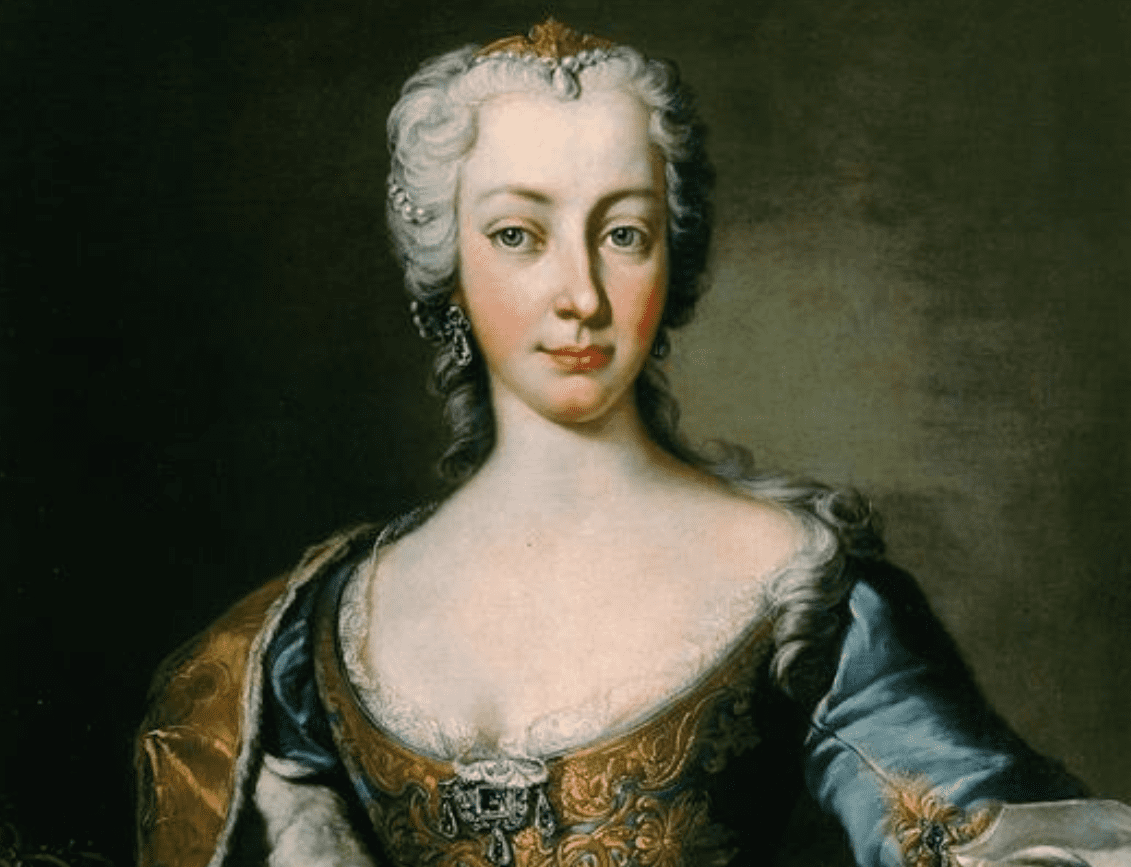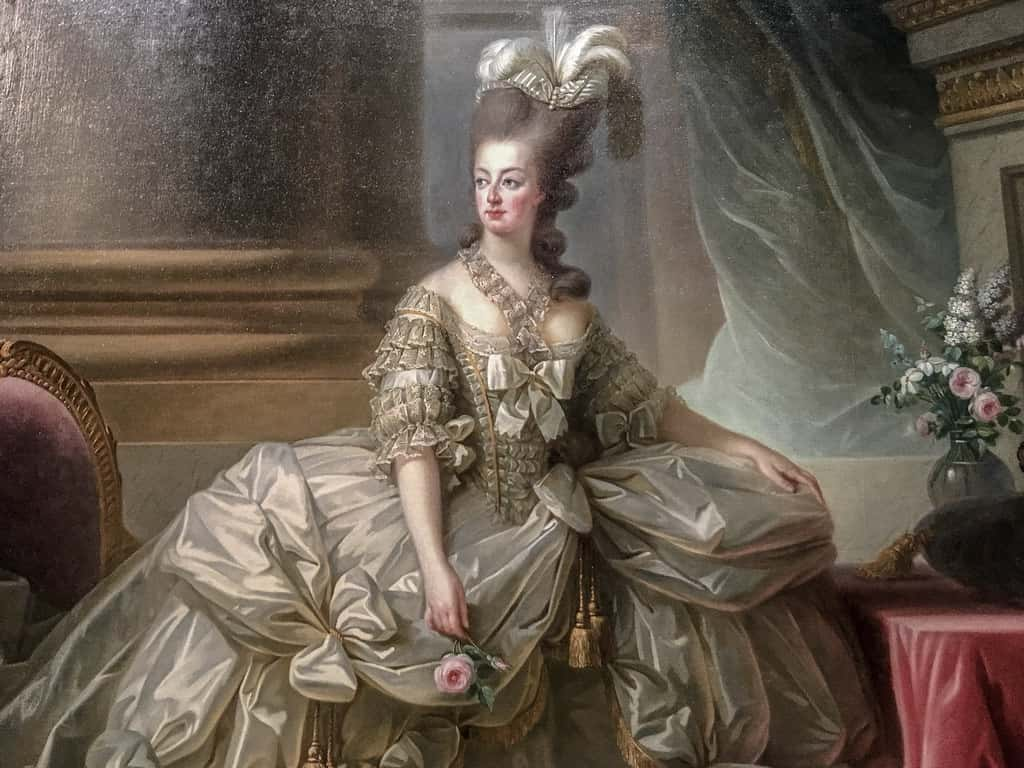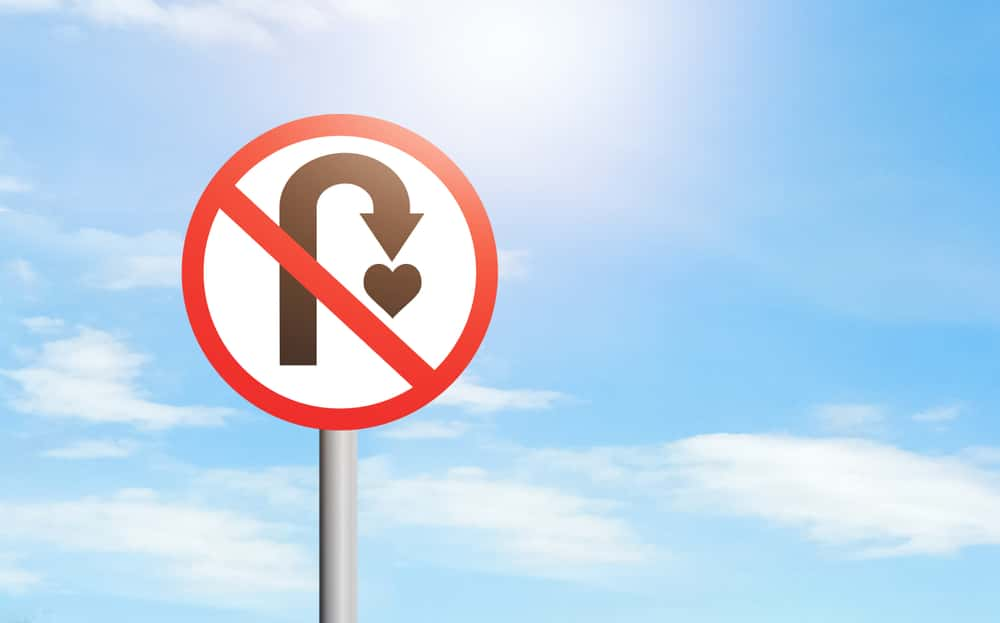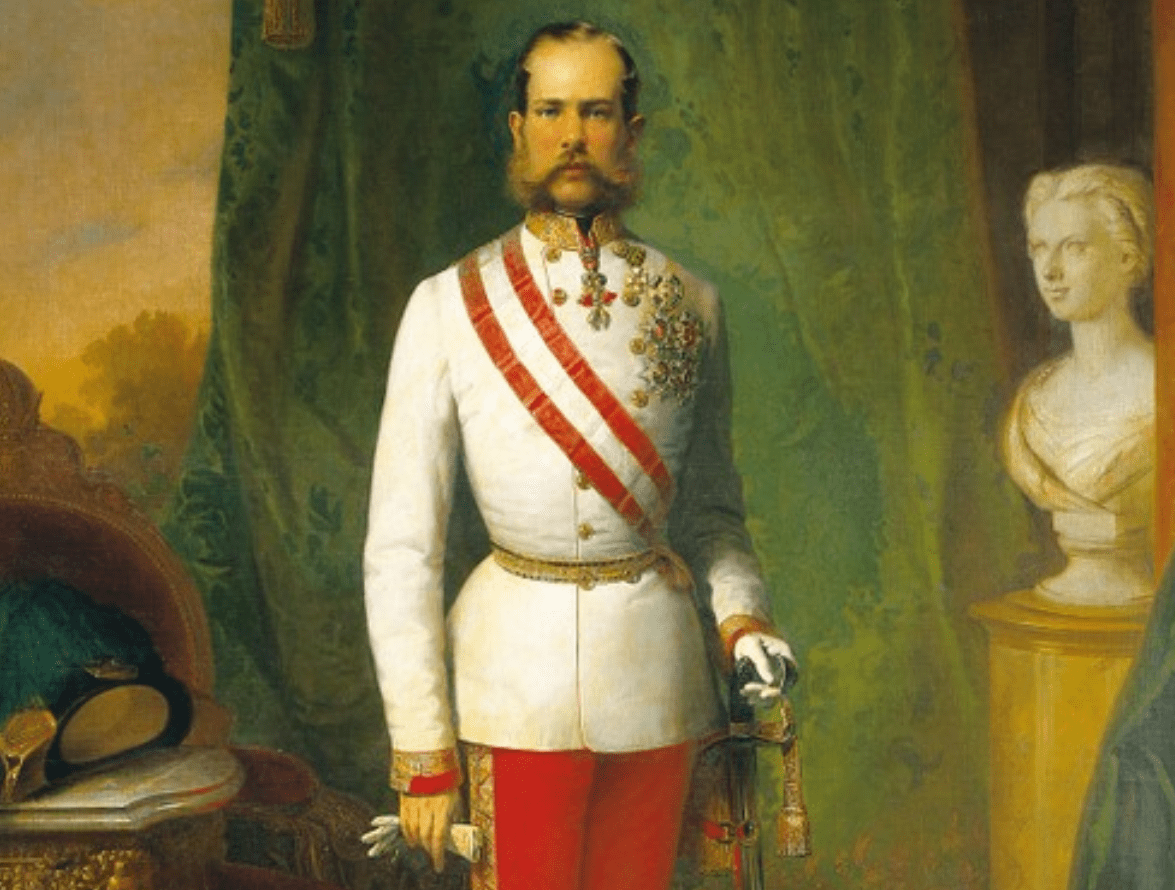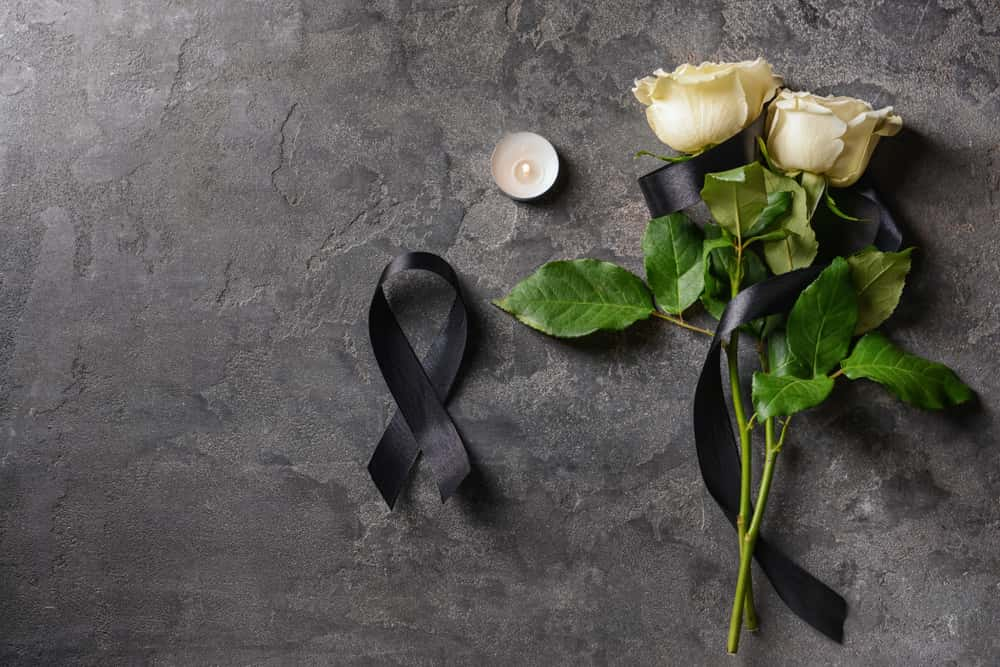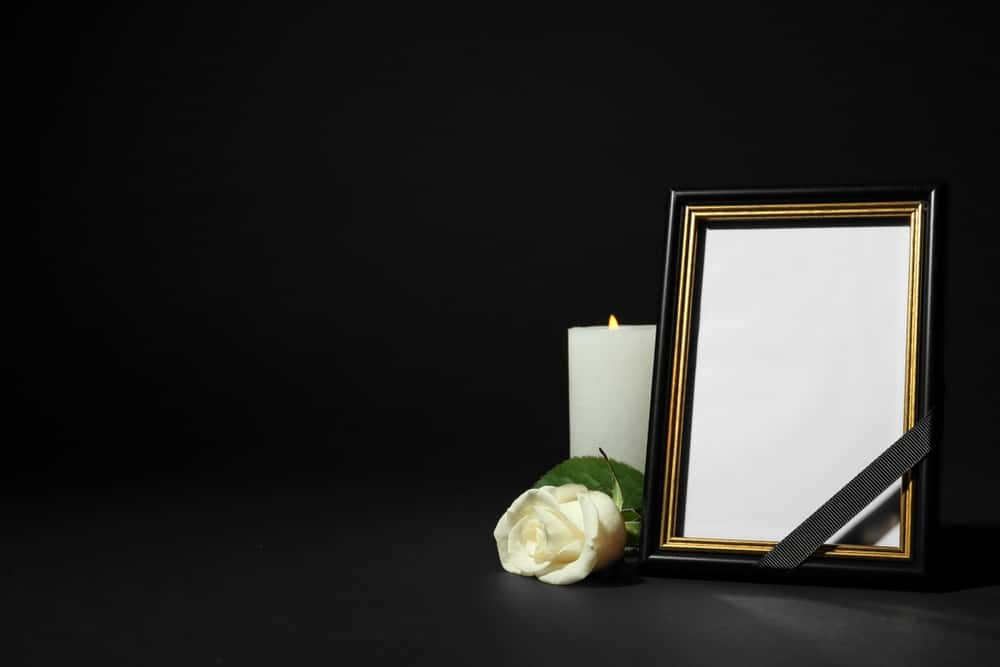The Last Habsburg's Life Was A Royal Nightmare
Queen Maria Theresa was literally a natural-born leader. As the eldest surviving child of a Holy Roman Emperor, the swaddling babe held more power in her pinkie finger than most people can dream of in their entire lives—and she fought tooth and nail to keep it.
After all, that was just the beginning of a legendary reign full of brutality, tragedy, and lots and lots of children.

1. Her Birth Was Disappointing
Maria Theresa’s parents, Holy Roman Emperor Charles VI and Queen Elizabeth Christine, lost their first son just before she was born. Despite this, their reaction to their daughter's birth was utterly chilling. Charles was the last male member of the Habsburg dynasty, and he wanted a son to succeed him and carry on his name. When Charles saw that Maria was a girl, he was crestfallen.
He never got over it, and worst of all, he had only girls after.
2. Her Family Had A Dark Past
At the time, the House of Habsburg was notorious for a dark reason. The family's constant inbreeding led to some very infamous cases of mental imbalance. But in a shocking twist, it turned out that Maria’s parents and grandparents were not closely related to each other. The fact that her family was diverse and not, well, inbred, was a rare exception. Monarchy: They’re not like us.
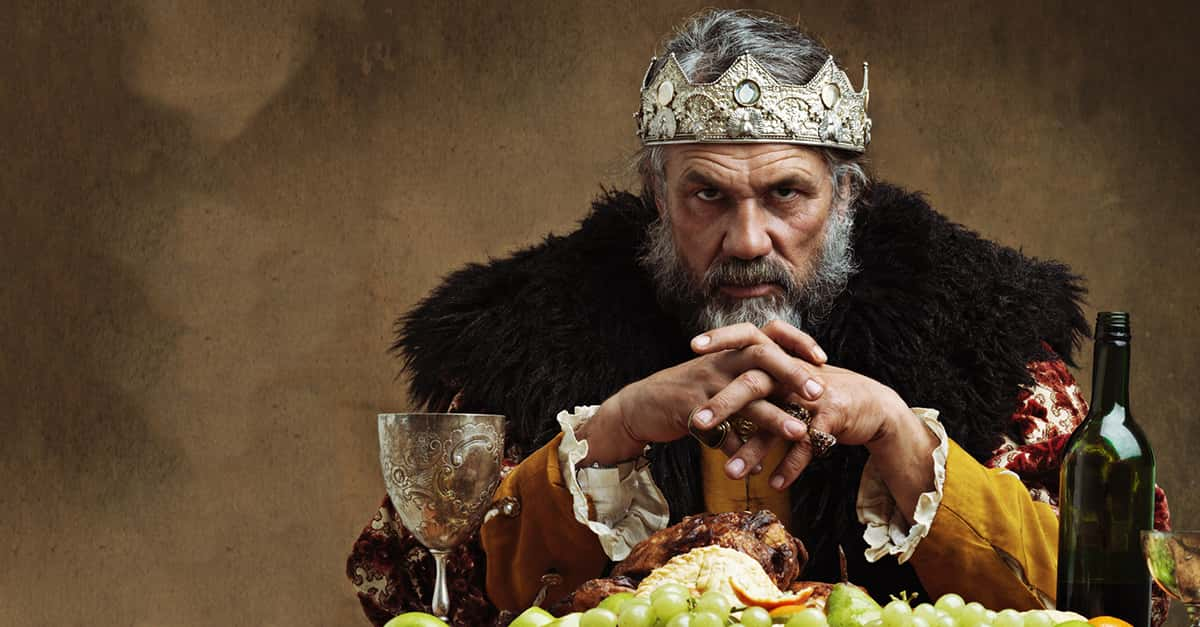
3. She Was An Overachiever
Throughout her life, Maria Theresa had no less than 16 children. Sixteen. SIXTEEN! How else can I emphasize how ridiculous that number is?
4. She Held Many Titles
Maria Theresa was the sole female ruler of the Habsburgs, and the last of her house. In her own right, she was the ruler of Austria, Hungary, and Bohemia, among other countries—not to mention her title as the "Empress Consort of the Holy Roman Empire".
5. Her Children Lacked An Education
Possibly Maria Theresa’s most neglected child was also her most infamous: Maria Antonia, who you might know better as the infamous French aristocrat Marie Antoinette. When the girl went to France to marry the Dauphin Louis, Maria Theresa had to quickly give her a crash course in, uh, everything. Poor Marie’s education had been grossly mishandled.
6. She Was Influential
Even though there was never an official reigning Holy Roman Empress, Maria Theresa basically held the position, even if she didn't hold the title. The Queen wore the pants in her marriage to Holy Roman Emperor Francis I, with Maria Theresa becoming one of the most influential consorts in the title’s thousand-year history.
7. She Was Stunning
Even when she was a young girl, many praised Maria Theresa for her beauty. She had big, blue eyes, strawberry blonde hair, and a wide, pleasing mouth. She also had a strong, healthy body. All the better for making babies, natch.
8. She Wasn't Enough
Maria Theresa’s power came at an enormous cost. 18th-century Europe didn’t really have a tolerant #Girlboss spirit, and her father Charles VI had to spend pretty much his entire life trying to convince other European nations to allow her to reign after him through a so-called "Pragmatic Sanction". No wonder he wanted that boy!
9. She Had To Follow Rules
Though she was a princess of Germany, having a fancy title didn’t mean that Maria Theresa got to do whatever she wanted. As a girl, her father banned her from learning to ride horseback, presumably because it was too unladylike. Perhaps still in denial about having a daughter rather than a son, Charles VI also never taught her about statecraft or sovereignty.
10. She Was A Monarch-In-Training
The young Maria Theresa was very shy and serious. Yet despite these typical bookworm qualities, she wasn’t an extraordinary student. Though her Latin was passable, her spelling was atrocious, and she never quite learned to speak with the proper formality of a queen.
11. She Became A Child Bride
Thanks to her prime position in the monarchy, Maria Theresa was a hot commodity on the marriage market. When she was still a child, her parents were already planning to marry their bouncing baby girl off to the 16-year-old Leopold Clement of Lorraine. But these plans didn’t last long for a tragic reason. Sadly, young Leopold lost his life to smallpox soon after.
12. A Family That Sings Together…
Maria Theresa loved singing, music, and the opera, and one of her favorite girlhood pastimes was staging elaborate musical spectacles with her family. That’s right, as family bonding time, the royals put on operas for each other. After all, they were the Imperial Habsburgs; if course even their hobbies were high class.
13. Oh, Brother
After the loss of her should-be husband Leopold, Maria Theresa’s parents quickly shifted their attentions to Leopold’s sibling Francis. This Plan B(rother) worked a treat. Though Francis was also more than a decade older than Maria Theresa, the little girl took a shining to the boy, and he soon became the best bet to win her hand in marriage.
14. Marvelous Mimi
Maria Theresa definitely played favorites. According to explicit statements in her letters, her most beloved child was her fourth daughter Maria Christina, who she lovingly called "Mimi". Not only was Mimi beautiful, high-spirited, and intelligent, she also had the good sense to be born on her mother’s 25th birthday.
Sadly, Maria Theresa’s favoritism had a terrible dark side: All her other children jealously avoided and sniped at the favored girl
15. Holy Matrimony
On February 12, 1736, Maria Theresa finally got her heart’s desire: she and Francis married.
16. Oh Boy
The Queen’s first three children were all girls, though only one of them survived past infancy. Just like dear old dad, Maria Theresa was utterly heartbroken when she learned her heirs were all female. In the coming years, she prayed desperately to Saint Joseph for a boy. So when she finally had one in 1741, she naturally named him "Joseph".
17. The King Is Dead
On October 20, 1740, Maria Theresa’s world changed forever when her father Charles VI suffered an utterly horrific death. He stopped for food at one of his estates and, as the story goes, got fatally sick after eating the infamously dangerous "death cap" mushrooms. I have this feeling that a scullery maid got sacked…if she was lucky.
18. It’s a Man’s World
In order to gain more respect from her peers and subjects, Maria Theresa sometimes adopted masculine titles like "King" and "Archduke".
19. Nothing to Lose
With the loss of her father, 23-year-old Maria Theresa found herself the ruler of the Habsburg holdings. Great news, right? Wrong. Dark days were ahead. Charles had spent too much time getting signatures for his Pragmatic Sanction and not enough time filling his royal coffers and feeding his royal army. It was a fatal mistake.
Even worse, the Sanction that Charles had worked so hard on fell apart after his passing. With this failure, Charles' death left the Habsburg Empire impoverished and abandoned a naive Maria Theresa to fend for herself.
20. Vote for Me
The title of "Holy Roman Emperor" has a long and bloody history in Europe. I mean, wouldn’t you fight brutal conflicts for that cool name? Starting with Charlemagne in 800, the post was supposedly the second coming of the Roman Empire. By Maria Theresa’s time, it even took on a shockingly modern feature: The Emperor was elected, not born.
21. Boy, Bye
Maria Theresa's husband Francis I was about as good of a ruler as he was a spouse. Though he had a brilliant mind for business, statecraft was not his forte, and it suited both partners just fine to have Maria Theresa take the reins on the reign. She inhabited the role with ease. Apparently, if she and Francis disagreed in council meetings, she would just dismiss him from the room. Sounds about right.
22. Pious Princess
True to the whole "Holy Roman" thing, Maria Theresa was a devout Catholic.
23. Pregnant Pause
With the kingdom in dire straits at the beginning of her reign, the wolves started closing in on Maria Theresa. Suddenly, the young Queen was embroiled in the War of the Austrian Succession with rebel Habsburg holdings—that is, the war of her succession. To make matters worse, she was pregnant much of this time, which tends to happen when you have 16 (SIXTEEN!) children.
At one particularly desperate moment near her due date, she lamented, "I don't know if a town will remain to me for my delivery".
24. A Little of Column A, A Little of Column Torment
Some historians characterize Maria Theresa’s rule as a half-old school, half-progressive "Enlightenment absolutism". Which basically means she conservatively cracked down on adulterers, imposed rampant book censorship, and was infamously pretty pro-torment as punishment. But hey, she also sometimes tried to help out the common people.
25. Let’s Get Down to Business
At the start of her reign, Maria Theresa’s army was in such shambles that she remarked, "As for the state in which I found the army, I cannot begin to describe it". With Maria Theresa in charge, it didn’t stay that way for long. Within a decade, she had turned the undisciplined, weakened cadre into a European powerhouse.
26. Sneaking Around
Unfortunately for Maria Theresa, her husband Francis was unfaithful throughout almost their entire marriage. But it gets worse: As a bona-fide serial cheater, the Emperor was cavalier about wooing his bedroom partners, and he cared even less about who saw him do it. His most famous affair was with Countess Maria Wilhelmina von Neipperg, a beautiful courtier who just so happened to be a whopping 30 years younger than him.
27. Now Kiss the Bride
Francis’s affair with Countess Wilhelmina drove Maria Theresa to despair. Unable to take it any longer, she quickly arranged for the Countess to marry a prince and get the heck out of her life.
28. Campaign Manager
Maria Theresa knew she wanted to follow in her father’s footsteps and become Holy Roman Empress—but there was just one problem. No woman could be elected to the post. Then again, she did have a perfectly good husband lying around. After five long years, Maria Theresa finally succeeded in electing Francis to Holy Roman Emperor in 1745. She basically reigned through her sitting duck hubby.
29. Hungry for Hungary
Maria Theresa was a hands-on queen. Determined and fearless, she was right in mud of politicking during her War of Succession. Desperate to win and keep the support of Hungary, she even painstakingly taught herself how to horseback ride so she could participate in the absurdly complicated traditional Hungarian coronation ceremony.
30. Royal Disappointments
The absolute monarch made criticizing her children an art form. Her son Leopold was too cold, Maria Carolina was too political, Ferdinand’s head was full of wool, and Maria Amalia was prideful, snobby, and—quelle horreur!—bad at French. Unless your name was "Maria Christina," chances are that you simply could not please the queen.
31. Maria’s Choice
On September 11, 1741, the rebel queen performed an absolutely baller move. She appeared at the Hungarian Diet wearing the nation's glorious Crown of Stephen. The coronal is also known as "The Holy Crown of Hungary," and Maria Theresa wore it as if to say, "Yeah guys, like it or not, I AM your Queen". But she wasn’t even done yet.
When the crowd turned on her, she held up her newborn son Joseph, wept, and pledged him to their cause. Though I don’t really recommend throwing your tiny baby under the bus at important political meetings, it worked for her. By the end, the Hungarians vowed to die for her.
32. Coulda, Shoulda, Woulda
According to the monarch herself, if she hadn’t been pregnant for pretty much the entire span of the War of Succession, Maria Theresa would have charged into the battlefield herself.
33. Do As I Say
Maria Theresa was a strict and authoritarian mother who had no problem with intense meddling in her sons’ and daughters’ lives. In particular, the queen coldly married most of her children off for political gain regardless of their very negative feelings on the matter. There was, however, one bitter exception to this terribly cruel rule.
She let her favorite birthday twin Maria Christina marry—gasp—the man she loved, Prince Albert of Saxony, despite pushing her other girls into loveless marriages.
34. Can’t Hold Her Down
The Empress contracted smallpox in the same 1767 epidemic that felled her own daughter, but the old mare miraculously survived.
35. Paint It Black
On August 18, 1765, Maria Theresa’s husband Francis perished on an utterly tragic day: The King perished while celebrating their son Leopold’s wedding. The queen’s reaction was heartbreaking. All festivities came to a grinding halt while she cut her hair off, lacquered her rooms in black, and dressed in the mourning clothes she would sport for the rest of her life.
36. Get out
Devout Catholic monarchs don’t have the best track record for "tolerance" or things like "not burning people at the stake" (ahem, Bloody Mary), and Maria Theresa was no different. In what most rightly consider the darkest part of her reign, she tormented and expelled Jewish people from all across her realm, tempering these edicts only slightly in her old age.
It’s easy to throw up our hands and say, "Those were just the times," but the thing is, they weren’t. Even her own son Joseph found her policies "unjust, impious, impossible, harmful and ridiculous". Check, check, check.
37. Take It Down a Notch
Throughout Marie Antoinette’s reign as Queen of France, Maria Theresa never let her daughter get too cocky. She kept up a weekly correspondence with the girl, where she often berated her laziness, frivolous spending, and especially her slow start in producing heirs. I mean, she's not totally off base but is it really too much to ask for some constructive criticism?
38. Animal Instincts
For the rest of her years after King Francis’ demise on August 18, Maria Theresa spent the entire month of August and the 18th of every single month alone in her rooms, reliving her beloved husband’s final hours. As she keened, "I hardly know myself now, for I have become like an animal with no true life or reasoning power".
39. Love Me Do
Maria Theresa was extremely jealous of her beloved husband Francis, and unfortunately, she had good reason to be insecure. In her early letters to him, she is plying, sweet, and vibrant, while his letters can only be described as stale and perfunctory. Sadly, the cold, hard truth is that she loved him far more than he loved her.
40. Mommy and Me
After Francis’s death, Maria Theresa declared that she and her eldest son Joseph were co-rulers of the Habsburg dynasty, but their rule was fraught with disturbing tension. For one, the grown Joseph was still terrified of his overbearing mother. For her part, Maria Theresa was happy to passive aggressively undermine him in ways only mothers can do.
In one letter, she complained daintily, "We never see each other except at dinner...His temper gets worse every day...Please burn this letter...I just try to avoid public scandal". Sure you do Maria, sure you do.
41. A Good End
On November 24, 1780, Maria Theresa fell ill. She had never fully recovered from her bout with smallpox in the 1760s, and in her weakened state she passed on just a couple of days later on November 29th. She left this Earth surrounded by her many children.
42. A Rash of Bad Luck
Here’s family drama for you: It’s said that Maria Theresa killed her own daughter. In 1767, Maria Theresa’s daughter-in-law caught a fatal case of smallpox. The Empress then forced her 16-year-old natural daughter Maria Josepha to pray at the badly-sealed crypt. Two days later, the worst happened. The teenage girl showed the tell-tale smallpox rash and quickly perished.
43. Forgive Me
Maria Theresa, like many others, blamed herself for the tragic demise of Maria Josepha—but the truth is much more complicated. The incubation period for smallpox is actually about one week. Since Maria Josepha showed the rash just two days after visiting the crypt, she had to have contracted it before then. Maria Theresa’s anguish was in vain.



